Oval Tub – Kaiser Wilhelm I Bust
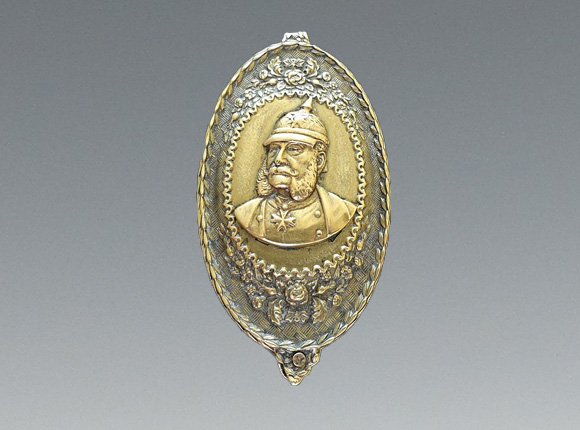
Needle Case (photograph courtesy of eBay)
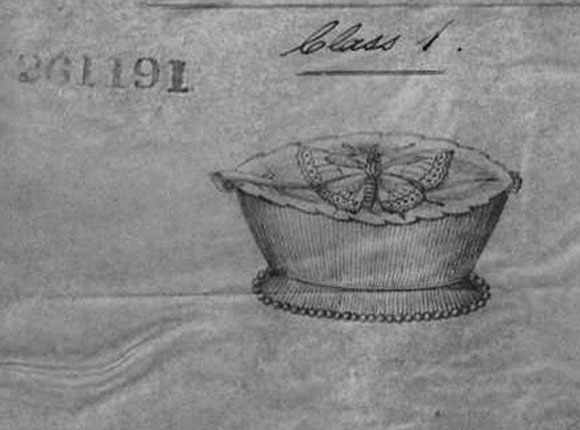
Design Representation
Design Details
Needle Case Type: |
Figural (diamond mark on needle case matches this design registration) |
Patent/Registered to: |
W. Avery & Son - Redditch |
Patent/Design Representation #: |
Ornamental Class1: Metal: #261191 |
Patent/Design Registration Date: |
March 16, 1872 |
Location of Patent/Design Registration: |
The National Archives (TNA) - Kew, UK |
Reference #: |
TNA Representation - BT 43/31/261191
TNA Register - BT 44/2/261191 |
Dimensions: |
7 x 3.8 x 2.3 |
Material: |
Brass |
Name Variations: |
W. Avery & Son - Redditch |
Other Variations: |
a) Butterfly Box - Oval Tub
b) Oval Tub - Diamond Jubilee
c) Oval Tub - Ladies Portrait Bust
d) Oval Tub - Scott’s Monument
e) Oval Tub - Scott’s Portrait Bust |
Additional Photographs
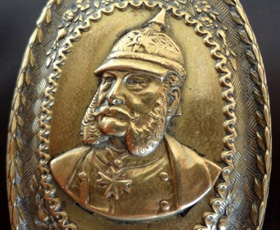
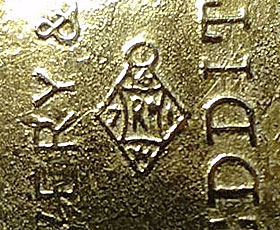
Top detail and bottom diamond mark detail
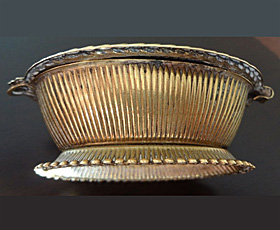
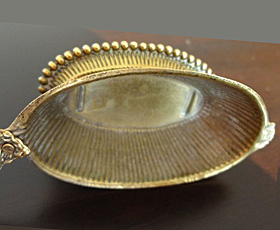
Side view and interior view
William I, German Emperor and King of Prussia
Facts
Wilhelm Friedrich Ludwig of the house of Hohenzollern was King of Prussia from 1861 until his death in 1888. He was also the first head of
state of a united Germany when proclaimed German emperor in the Hall of Mirrors at the Palace of Versailles after Paris was taken in the
Franco-Prussian war in 1871. The German Empire or Kaiserreich of which he was the first head of state was a federation of kingdoms, duchies
and free cities that had constituted the Northern Confederation of Germany and lasted until 1918. Click on the picture below to see a larger
version of it.
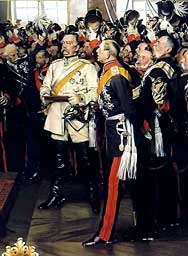
History
Wilhelm I was born in 1797 and as the second son of Friedrich Wilhelm III, the heir to the Prussian throne, was expected to have a military
career. He was appointed a Prussian army officer at age 10 and served with the army from 1814 fighting in the Napoleonic Wars. He was
awarded the Iron Cross and rose rapidly through the ranks eventually attaining the rank of field-marshal in 1854. This experience made him a
strong advocate for the military. His brother, Friedrich Wilhelm IV, ascended to the throne in 1840 and since he was childless, Wilhelm
became the heir. He became Prince Regent in 1858 after his brother suffered a stroke the previous year which left him incapable of
ruling. In 1861 with the death of his brother, he became King of Prussia. By 1862 he was in conflict with the lower house of the
Prussian legislature over the length of army conscription and appointed Otto von Bismarck as Minister President of Prussia. He maintained this
collaboration with Bismarck, though at times strained, throughout his rule. Bismarck was committed to the creation of a unified Germany under
Prussian leadership and is credited by some with engineering a series of European wars to that end. The Franco-Prussian War ended when Paris
was captured. Bismarck was able to negotiate to include outstanding independent states to join a unified Germany and have King Wilhelm I
proclaimed Kaiser Wilhelm I as leader.
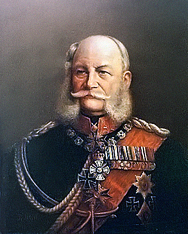
Miscellaneous
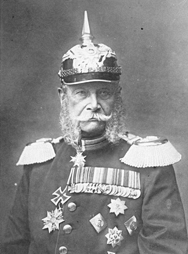
Kaiser Wilhelm I is an easily recognisable figure with his handle bar moustache, prominent mutton chops and pickelhaube or spiked helmet.
The pickelhaube was designed by Friedrich Wilhelm IV in 1842 for the Prussian infantry, its use soon spreading to other German principalities.
The Prussian helmet is glossy black hard leather with a metal edged rim and a metal spike. The spike can be unscrewed and replaced with a
plume holder. The metal front plate displays the identifying emblem. In the case of Prussian this is the spread winged eagle
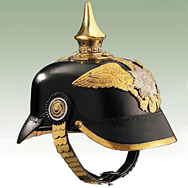
Note: Right side panel text and photos provided by Lynda Herrod.














